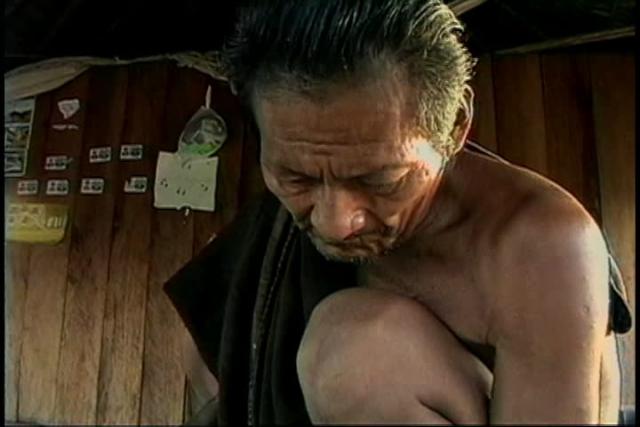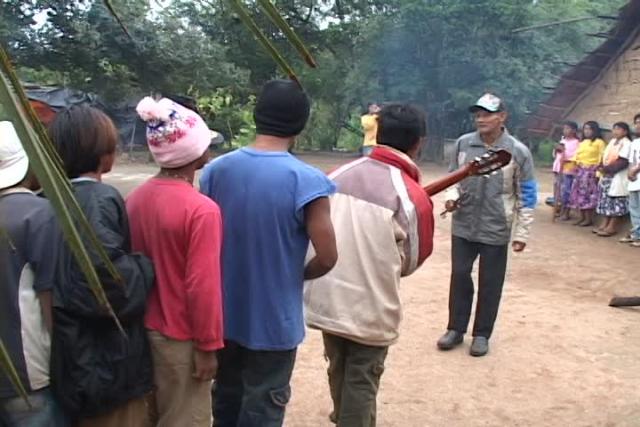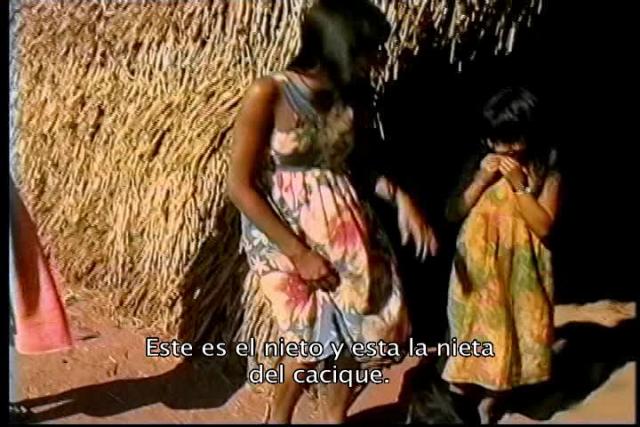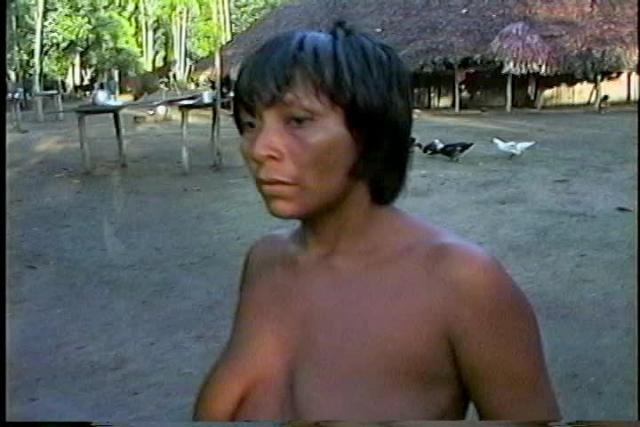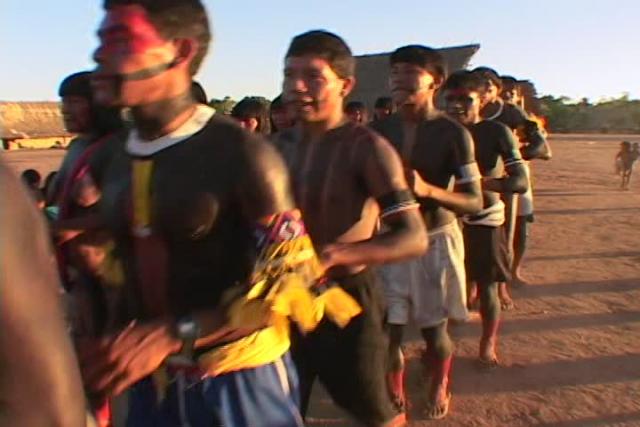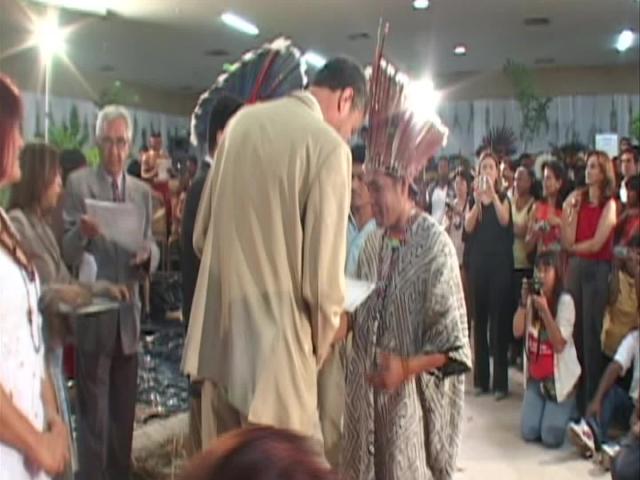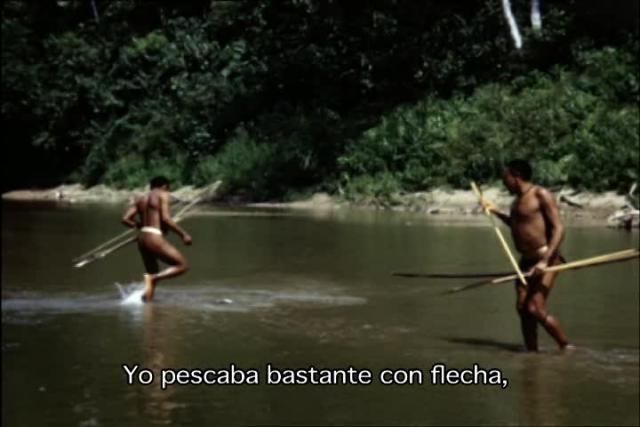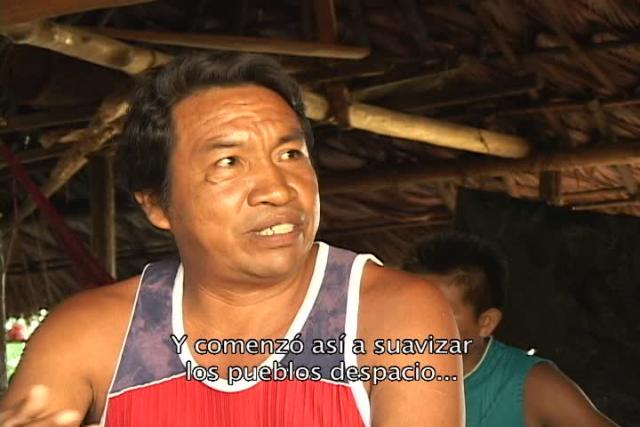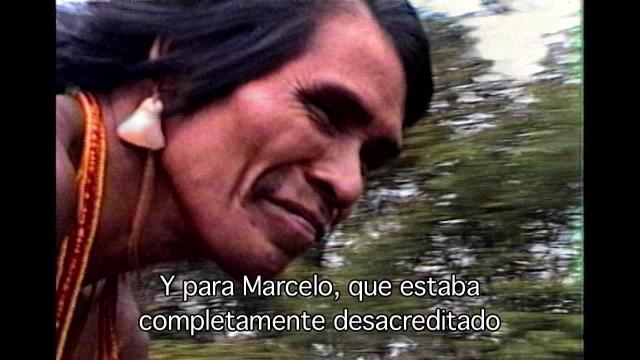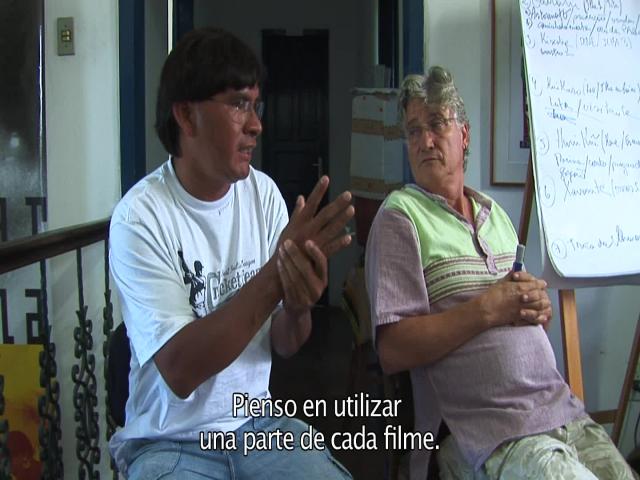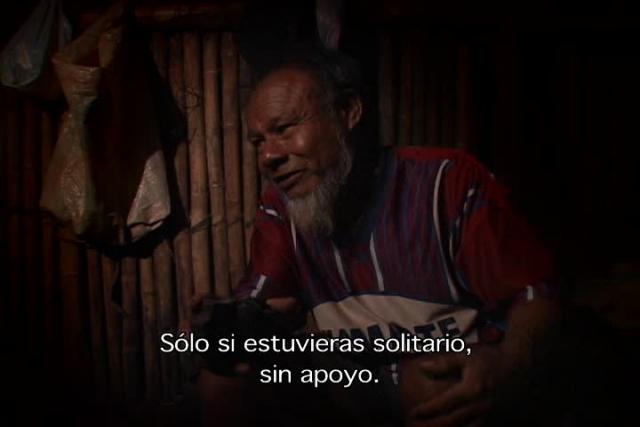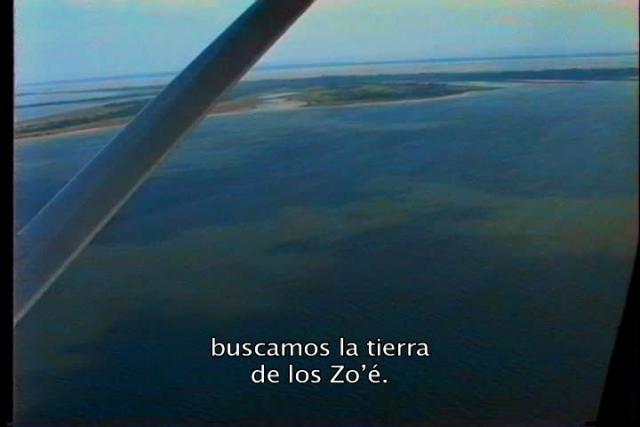Video Nas Aldeias
Have high-speed internet? Switch to High-Speed
Videos load too SLOW? Switch to Low-Speed
o dia em que a lua menstruou (subtitles)
Subtitles in English, Spanish, Portuguese
Media on this Channel
o dia em que a lua menstruou (subtitles)
Subtitles in English, Spanish, Portuguese
XINA BENA v.i. colorido e mixado (subtitles)
English, Spanish, Portuguese subtitles
Pi'õnhitsi | Unnamed Xavante Women (english subtitles)
Indigenous People: XavanteSince 2002, Divino Tserewahú tried to make a film about the female initiation rite, no longer practiced in any other Xavante village, but since he started filming, the ritual is interrupted. Young and old discuss the difficulties and resistances involved in making this celebration.
+ Tava 78' - H264 (subtitles)
Subtitles in English, Spanish, Portuguese
WAI'A REMASTER 2009 -v.i cor mix (subtitles)
English, Spanish, Portuguese subtitles
Prîara Jõ | Depois do ovo, a guerra (legendas em português)
Povo Indígena: PanaráAs crianças Panará apresentam seu universo em dia de brincadeira na aldeia. O tempo da guerra acabou, mas ainda continua vivo no imaginário das crianças.2008 |15 minDireção e Imagens: Komoi PanaráEdição: Daniel BandeiraProdução: Vídeo nas Aldeias
Prîara Jõ | After the egg, the war (english subtitles)
Indigenous People: PanaráThe Panará children present their universe in a play day in the village. Wartime is over but it remains alive in the children’s imagination.2008 |15 minDirection and Images: Komoi PanaráEditing: Daniel BandeiraProduction: Vídeo nas Aldeias
Tsõ'rehipãri | Sangradouro (english subtitles)
Indigenous People: XavanteIn 1957, after centuries of resistance and escape, a Xavante group takes refuge in the Salesian mission of Sangradouro, Mato Grosso. Today surrounded by soy cultures, with their land and resources impoverished, they show in this film their actual preoccupations in midst of all the changes they have experienced.
Tsõ'rehipãri | Sangradouro (legendas em português)
Povo Indígena: XavanteEm 1957, depois de séculos de resistência e de fuga, um grupo Xavante se refugiou na missão Salesiana de Sangradouro, Mato Grosso. Hoje rodeados de soja, com a terra e os recursos depauperados, eles mostram neste filme suas preocupações atuais em meio a todas as mudanças que vêm vivenciando.
Shomõtsi (english subtitles)
Indigenous People: AshaninkaShomõtsi is an Ashaninka Indian living on the border of Brazil and Peru. The movie is a report on his day to day life and his journey to the neighbouring city to get his pension as well as a portait of Valdete´s hard-headed and witty uncle.
Shomõtsi (legendas em português)
Povo Indígena: AshaninkaCrônica do cotidiano de Shomõtsi, um Ashaninka da fronteira do Brasil com o Peru. Professor e um dos videastas da aldeia, Valdete retrata o seu tio, turrão e divertido.2001 | 42 minDireção e fotografia: Valdete Pinhanta AshaninkaEdição: Mari CorrêaProdução: Vídeo nas Aldeias
Mokoi Tekoá, Petei Jeguatá | Duas aldeias, uma caminhada (legendas em português)
Povo Indígena: Mbya-GuaraniSem matas para caçar e sem terras para plantar, os Mby-Guarani dependem da venda do seu artesanato para sobreviver. Três jovens realizadores Guarani acompanham o dia-a-dia de duas comunidades unidas pela mesma história, do primeiro contato com os europeus até o intensa convívio com os brancos de hoje.
Mokoi Tekoá, Petei Jeguatá | Two villages, one single walk (english subtitles)
Indigenous People: Mbya-GuaraniWith no Forest left to hunt and no land to cultivate, the Maby-Guarani depend on the sale of their handcraft to survive. Three young Guarani filmmakers accompany the daily life of two comunities united by the same history, since the first contact with the Europeans until the intense coexistence with today’s White people.
Marangmotxíngmo mïrang | Das crianças Ikpeng para o mundo (legendas em português)
Povo Indígena: IkpengQuatro crianças Ikpeng apresentam sua aldeia respondendo à vídeo-carta das crianças da Sierra Maestra em Cuba. Com graça e leveza, elas mostram suas famílias, suas brincadeiras, suas festas, seu modo de vida. Curiosas em conhecer crianças de outras culturas, elas pedem para que respondam à sua vídeo-carta.
Marangmotxíngmo mïrang | From the Ikpeng children to the world (english subtitles)
Indigenous people: IkpengFour Ikpeng children introduce their village answering a video-letter from the children from Sierra Maestra in Cuba. They show their families, their toys, their celebrations, their way of life with grace and lightheartedness. Curious to know about children from other cultures, they ask that their video–letter be answered.
Kinja Iakaha | Um dia na aldeia (legendas em português)
Povo Indígena: Waimiri AtroariSeis índios de diferentes aldeias Waimiri e Atroari, na Amazônia, registram o dia-a-dia de seus parentes da aldeia Cacau. Estes registros, sintetizados em “Um dia na aldeia”, nos transportam para a intimidade do cotidiano indígena com a sua interação intensa com a natureza.
Kinja Iakaha | A day in the village (english subtitles)
Indigenous People: Waimiri AtroariSix Indians of different Waimiri and Atroari villages, located in the Amazon, document the day-to-day life of their relatives in the Cacau village. These images, stitched together in “A day in the village” transport us to intimate scenes of their lifestyle and their intense relationship with nature.
Kene Yuxi | The twists of Kene (english subtitles)
Indigenous People: Huni KuinTo try to reverse the abandonment of the traditions of his people and following the research of his father, the teacher and writer Joaquim Maná, Zezinho Yube runs behind the knowledge of the traditional artwork of Huni Kui women aided by his mother.
Kene Yuxi | As voltas do Kene (legendas em português)
Povo Indígena: Huni KuinAo tentar reverter o abandono das tradições do seu povo e seguindo as pesquisas do seu pai, o professor e escritor Joaquim Maná, Zezinho Yube corre atrás dos conhecimentos dos grafismos tradicionais das mulheres Huni Kui auxiliado por sua mãe.
I’ve already become an image (english subtitles)
Indigenous People: Huni Kui
Já me transformei em imagem (legendas em português)
Povo Indígena: Huni KuiUma conversa sobre a história dos Huni Kui desde o tempo do contato, passando pelo cativeiro nos seringais, até o trabalho atual com o vídeo.2008 | 32 minDireção: Zezinho YubeEdição: Zezinho Yube e Ernesto Ignacio de CarvalhoImagens: Mari Corrêa, Tadeu Siã, Vincent Carelli e Zezinho Yube
Iauaretê, Waterfall of the jaguars (english subtitles)
Indigenous People: Tariano
Iauaretê, Cachoeira das onças (legendas em português)
Povo Indígena: Tariano
Corumbiara
Em 1985, o indigenista Marcelo Santos, denuncia um massacre de índios na Gleba Corumbiara (RO), e Vincent Carelli filma o que resta das evidências. Bárbaro demais, o caso passa por fantasia, e cai no esquecimento. Marcelo e sua equipe levam anos para encontrar os sobreviventes. Duas décadas depois, “Corumbiara” revela essa busca e a versão dos índios...
Corumbiara (english subtitles)
In 1985, a daring worker of the Bureau of Indian Affairs in Brazil denounced a massacre in the lawless region of Corumbiara. The investigations turned to a series of Indian genocides in the area. Spanning 20 years, the film shows the search for proof and the version of the survivors, when they were finally found, hiding in the forest, terrified of white men...
Indigenous Filmmakers (english subtiles)
From a gathering of indigenous filmmakers at the headquarters of the Video in the Villages in Olinda, the film presents a profile of its principal filmmakers and their performance in their villages. This film is a collaboration between Cristian Jure and Cartoy Emilio, author of the film "La guerra por otros medios", and the Vídeo nas Aldeias’ team.
Cineastas Indígenas
A partir de um encontro de realizadores indígenas na sede do Vídeo nas Aldeias em Olinda, o filme traça um perfil dos seus principais cineastas e sua atuação em suas aldeias. Este filme é fruto de uma colaboração entre Cristian Jure e Emilio Cartoy, autores do filme "La guerra por otros medios", e a equipe do Vídeo nas Aldeias.
Bicicletas de Nhanderú (legendas em português)
Povo Indígena: Mbya-GuaraniUma imersão na espiritualidade presente no cotidiano dos Mbya-Guarani da aldeia Koenju, em São Miguel das Missões no Rio Grande do Sul.
Bicycles of Nhanderu (english subtitles)
Indigenous People: Mbya-GuaraniAn immersion in spirituality and everyday life of the Mbya-Guarani from the Koenju Village, in southern Brazil.
A Arca dos Zo'é (legendas em português)
Povos Indígenas: Waiãpi e Zo’é
Meeting the Ancestors (english subtitles)
Indigenous Peoples: Waiãpi and Zo'é
A gente luta mas come fruta (legendas em português)
Povo Indígena: AshaninkaO manejo agroflorestal realizado pelos Ashaninka da aldeia Apiwtxa no rio Amônia, Acre. No filme eles registram, por um lado, seu trabalho para recuperar os recursos da sua reserva e repovoar seus rios e suas matas com espécies nativas, e por outro, sua luta contra os madeireiros que invadem sua área na fronteira com o Peru.
We struggle but we eat fruit (english subtitles)
Indigenous People: Ashaninka
The Spirit of TV
Beginning with the arrival by canoe of a TV and VCR in their village, The Spirit of TV documents the emotions and thoughts of the Waiãpi as they first encounter their own TV images and those of others. They view a tape from their chief’s first trip to Brasilia to speak to the government, news broadcasts, and videos on other Brazilian native peoples.
Meeting the Ancestors | A Arca dos Zo'é (english subtitles)
Indigenous Peoples: Waiãpi and Zo'é
Video in the Villages presents itself (Trailer)
A clip of the film VNA PRESENTS ITSELF, in which Video in the Villages presents its recent progress. Founded in 1987, the project began with the introduction of video in Indigenous communities. Since 1997, the project has been investing in the trainning of the first generation of Indigenous filmmakers, through national and regional video workshops.



















